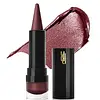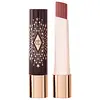What's inside
What's inside
 Key Ingredients
Key Ingredients

 Benefits
Benefits

 Concerns
Concerns

 Ingredients Side-by-side
Ingredients Side-by-side

Ozokerite
Emulsion StabilisingPentaerythrityl Tetraisostearate
EmollientCaprylic/Capric Triglyceride
MaskingDiisostearyl Malate
EmollientIsopropyl Palmitate
EmollientOctyldodecanol
EmollientBis-Diglyceryl Polyacyladipate-2
EmollientTrimethylolpropane Triisostearate
EmollientDipentaerythrityl Hexa C5-9 Acid Esters
Skin ConditioningBis-Behenyl/Isostearyl/Phytosteryl Dimer Dilinoleyl Dimer Dilinoleate
EmollientNeopentyl Glycol Diethylhexanoate
EmollientPolybutene
Isononyl Isononanoate
EmollientHydrogenated Castor Oil
EmollientSorbitan Sesquioleate
EmulsifyingMicrocrystalline Wax
Emulsion StabilisingSorbic Acid
PreservativePhenoxyethanol
PreservativeAstrocaryum Murumuru Seed Butter
EmollientSilica
AbrasivePhytosteryl Macadamiate
Skin ConditioningHelianthus Annuus Seed Oil
EmollientTocopherol
AntioxidantPassiflora Edulis Seed Oil
EmollientArgania Spinosa Kernel Oil
EmollientMacadamia Integrifolia Seed Oil
Skin ConditioningCocos Nucifera Oil
MaskingGlycine Soja Oil
EmollientPrunus Amygdalus Dulcis Oil
Skin ConditioningSodium Hyaluronate
HumectantMica
Cosmetic ColorantIron Oxides
CI 77492
Cosmetic ColorantCI 77499
Cosmetic ColorantTitanium Dioxide
Cosmetic ColorantBlue 1 Lake
Cosmetic ColorantCI 45410
Cosmetic ColorantCI 15850
Cosmetic ColorantOzokerite, Pentaerythrityl Tetraisostearate, Caprylic/Capric Triglyceride, Diisostearyl Malate, Isopropyl Palmitate, Octyldodecanol, Bis-Diglyceryl Polyacyladipate-2, Trimethylolpropane Triisostearate, Dipentaerythrityl Hexa C5-9 Acid Esters, Bis-Behenyl/Isostearyl/Phytosteryl Dimer Dilinoleyl Dimer Dilinoleate, Neopentyl Glycol Diethylhexanoate, Polybutene, Isononyl Isononanoate, Hydrogenated Castor Oil, Sorbitan Sesquioleate, Microcrystalline Wax, Sorbic Acid, Phenoxyethanol, Astrocaryum Murumuru Seed Butter, Silica, Phytosteryl Macadamiate, Helianthus Annuus Seed Oil, Tocopherol, Passiflora Edulis Seed Oil, Argania Spinosa Kernel Oil, Macadamia Integrifolia Seed Oil, Cocos Nucifera Oil, Glycine Soja Oil, Prunus Amygdalus Dulcis Oil, Sodium Hyaluronate, Mica, Iron Oxides, CI 77492, CI 77499, Titanium Dioxide, Blue 1 Lake, CI 45410, CI 15850
Diisostearyl Malate
EmollientBis-Behenyl/Isostearyl/Phytosteryl Dimer Dilinoleyl Dimer Dilinoleate
EmollientBis-Diglyceryl Polyacyladipate-2
EmollientHydrogenated Polyisobutene
EmollientCeresin
Emulsion StabilisingOctyldodecanol
EmollientSynthetic Wax
AbrasivePentaerythrityl Tetraisostearate
Emollient1,2-Hexanediol
Skin ConditioningDisteardimonium Hectorite
StabilisingSodium Hyaluronate
HumectantPassiflora Edulis Seed Oil
EmollientTheobroma Grandiflorum Seed Butter
Skin ConditioningPalmitoyl Hexapeptide-12
Skin ConditioningParfum
MaskingTocopheryl Acetate
AntioxidantPropylene Carbonate
SolventCaprylic/Capric Triglyceride
MaskingC10-18 Triglycerides
EmollientTriolein
Skin ConditioningStearalkonium Hectorite
Gel FormingGlyceryl Dioleate
EmollientCI 77891
Cosmetic ColorantIron Oxides
CI 15850
Cosmetic ColorantDiisostearyl Malate, Bis-Behenyl/Isostearyl/Phytosteryl Dimer Dilinoleyl Dimer Dilinoleate, Bis-Diglyceryl Polyacyladipate-2, Hydrogenated Polyisobutene, Ceresin, Octyldodecanol, Synthetic Wax, Pentaerythrityl Tetraisostearate, 1,2-Hexanediol, Disteardimonium Hectorite, Sodium Hyaluronate, Passiflora Edulis Seed Oil, Theobroma Grandiflorum Seed Butter, Palmitoyl Hexapeptide-12, Parfum, Tocopheryl Acetate, Propylene Carbonate, Caprylic/Capric Triglyceride, C10-18 Triglycerides, Triolein, Stearalkonium Hectorite, Glyceryl Dioleate, CI 77891, Iron Oxides, CI 15850
Ingredients Explained
These ingredients are found in both products.
Ingredients higher up in an ingredient list are typically present in a larger amount.
We don't have a description for Bis-Behenyl/Isostearyl/Phytosteryl Dimer Dilinoleyl Dimer Dilinoleate yet.
This ingredient is lipid-based synthetic skin-conditioning agent derived from adipic acid and a mixture of fatty acids. It is often called a lanolin substitute.
As an emollient, it helps soften and hydrate the skin. Emollients create a barrier on the skin to trap moisture in.
Due to its fatty acid base, it may not be Malassezia folliculitis safe.
Learn more about Bis-Diglyceryl Polyacyladipate-2This ingredient is an emollient, solvent, and texture enhancer. It is considered a skin-softener by helping the skin prevent moisture loss.
It helps thicken a product's formula and makes it easier to spread by dissolving clumping compounds.
Caprylic Triglyceride is made by combining glycerin with coconut oil, forming a clear liquid.
While there is an assumption Caprylic Triglyceride can clog pores due to it being derived from coconut oil, there is no research supporting this.
Learn more about Caprylic/Capric TriglycerideCi 15850 is the pigment color red. It is an azo dye and created synthetically.
Azo dyes need to be thoroughly purified before use. This allows them to be more stable and longer-lasting.
This ingredient is common in foundations, lipsticks, and blushes. This color is described as brown/orangey red.
It has many secondary names such as Red 6 and Red 7. According to a manufacturer, Red 6 usually contains aluminum.
Learn more about CI 15850Diisostearyl Malate is an emollient and most often used in lip products. It comes from isostearyl alcohol, a fatty acid, and malic acid, an AHA.
As an emollient, Diisostearyl Malate helps create a thin film on your skin to trap moisture in. This helps keep your skin soft and smooth.
Octyldodecanol is a fatty alcohol. It is primarily used to enhance the texture of products.
As an emulsifier, Octyldodecanol helps prevent the oils and waters from separating. It also prevents ingredients from creating foam when shaken.
Octyldodecanol is created by reducing fatty acid to an alcohol.
Due to its high molecular weight, it does not get absorbed into the skin.
Learn more about OctyldodecanolPassiflora Edulis Seed Oil is an oil and isn't fungal acne safe.
Pentaerythrityl Tetraisostearate is derived from isostearic acid. It is an emollient and emulsifier.
The highest concentration of this ingredient is found in lipsticks.
This ingredient is minimally water soluble and may not be Malassezia folliculitis, or fungal-acne safe.
Learn more about Pentaerythrityl TetraisostearateSodium Hyaluronate is hyaluronic acid's salt form. It is commonly derived from the sodium salt of hyaluronic acid.
Like hyaluronic acid, it is great at holding water and acts as a humectant. This makes it a great skin hydrating ingredient.
Sodium Hyaluronate is naturally occurring in our bodies and is mostly found in eye fluid and joints.
These are some other common types of Hyaluronic Acid:
Learn more about Sodium HyaluronateThis ingredient is a combination of red, black, and yellow iron oxide pigments. This combination of colors is usually found in foundation, because it results in a "skin" color.